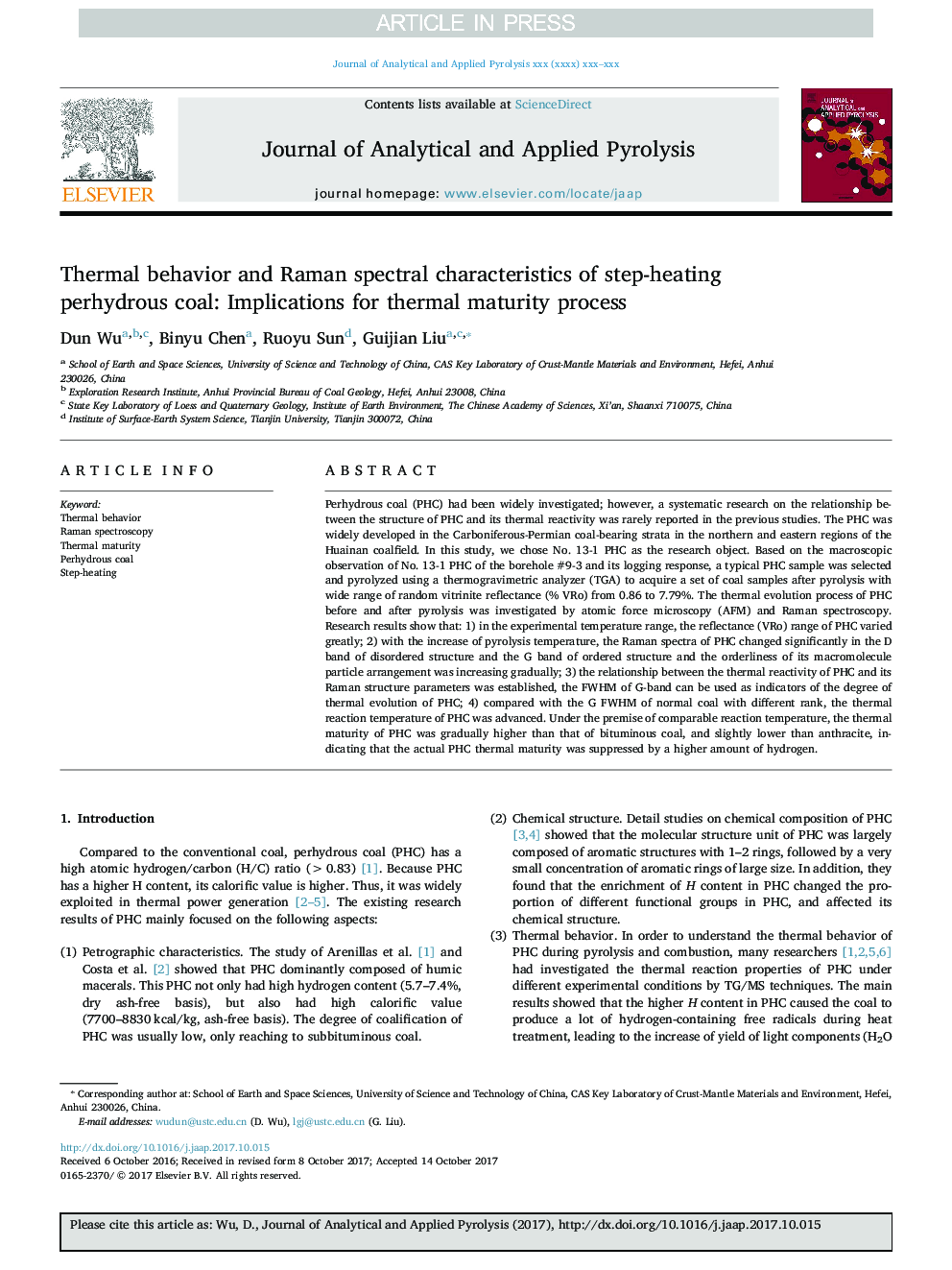| Article ID | Journal | Published Year | Pages | File Type |
|---|---|---|---|---|
| 7606463 | Journal of Analytical and Applied Pyrolysis | 2017 | 13 Pages |
Abstract
Perhydrous coal (PHC) had been widely investigated; however, a systematic research on the relationship between the structure of PHC and its thermal reactivity was rarely reported in the previous studies. The PHC was widely developed in the Carboniferous-Permian coal-bearing strata in the northern and eastern regions of the Huainan coalfield. In this study, we chose No. 13-1 PHC as the research object. Based on the macroscopic observation of No. 13-1 PHC of the borehole #9-3 and its logging response, a typical PHC sample was selected and pyrolyzed using a thermogravimetric analyzer (TGA) to acquire a set of coal samples after pyrolysis with wide range of random vitrinite reflectance (% VRo) from 0.86 to 7.79%. The thermal evolution process of PHC before and after pyrolysis was investigated by atomic force microscopy (AFM) and Raman spectroscopy. Research results show that: 1) in the experimental temperature range, the reflectance (VRo) range of PHC varied greatly; 2) with the increase of pyrolysis temperature, the Raman spectra of PHC changed significantly in the D band of disordered structure and the G band of ordered structure and the orderliness of its macromolecule particle arrangement was increasing gradually; 3) the relationship between the thermal reactivity of PHC and its Raman structure parameters was established, the FWHM of G-band can be used as indicators of the degree of thermal evolution of PHC; 4) compared with the G FWHM of normal coal with different rank, the thermal reaction temperature of PHC was advanced. Under the premise of comparable reaction temperature, the thermal maturity of PHC was gradually higher than that of bituminous coal, and slightly lower than anthracite, indicating that the actual PHC thermal maturity was suppressed by a higher amount of hydrogen.
Related Topics
Physical Sciences and Engineering
Chemistry
Analytical Chemistry
Authors
Dun Wu, Binyu Chen, Ruoyu Sun, Guijian Liu,
